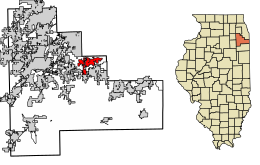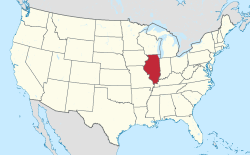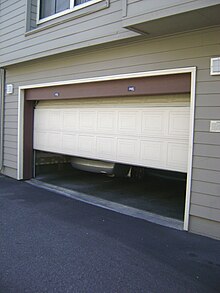Determine the Type of Garage Door and Opener
When garage doors suddenly stop functioning, it's a frustrating and inconvenient experience.Whether you're running for work or trying to get your car to garage during a downpour and the door stops working, it's the last thing you'd like to have to deal with.The first step in dealing with the issue is to determine the kind of garage door and opener that you have as it will greatly affect the way you approach solving the problem and fixing. .
Garage doors generally fall into several categories according to their design and operation.The most frequent varieties are roll-up, sectional, and tilt-up doors.Sectional doors are made of panels that are joined by hinges, allowing the doors to bend when it opens and closes along an upright track.Roll-up doors, typically seen in commercial settings made of slats that roll up into a coil.
Tilt-up doors, on the other hand are a single piece of furniture that tilts out and up as it opens.Importantly, you must identify the kind of garage door opener.The three primary types are belt-drive, chain-drive and screw-drive openers.Chain-drive openers, which utilize the use of a chain made of steel to lift and lower the door, are sturdy and cost-effective, but they can also be noisy.Belt-drive openers function the same way but they utilize a rubber belt which makes them quieter and ideal for attached garages.Screw-drive openers are able to move the door by using a threaded steel rod, offering a balance between noise and cost.
After you have identified your garage door's type and the opener's model, the next step is to conduct a simple checks for common issues.Ensure that power is connected to the opener examining the outlet as well as the breaker.Inspect the release cord for manual to make sure it hasn't been pulled, which will disconnect the door from the opener.Examine the tracks of the door and rollers for obstructions, or damage, and then clear any obstructions.
If needed, you should lubricate the moving parts. Insufficient lubrication can cause them to become stuck or snag.Resetting your opener can resolve any issues with electronics. Consult the manual of the model you're using to determine the precise steps. Certain openers can be reset with a push of an icon, while other require to be disconnected from the unit and then plugged back in.
The tension of springs is very high, and it could be hazardous to repair them if you don't have the right tools.
If the garage door stops functioning or is not working, it's best to consult a professional.
Examine for debris or obstructions.
If the garage door abruptly stops working, it can be both perplexing and frustrating, especially if it's a part of your daily routine.
This easy but powerful step can be used to pinpoint the problem, and restore the functionality of your garage.Even a minor obstruction could hinder your garage door from functioning properly.
Begin by examining the tracks that run along both sides of the door.Look for obvious obstructions, or the buildup of debris.If you see anything strange like stones or a twig stuck in the track, be sure to remove it.
There are times when the problem may not be apparent immediately So, it's recommended to move your fingers along the track in order to feel for any hidden obstacles.Ensure that the tracks are aligned properly as well, as misalignment can also cause the door to jam.Then, check the hinges and rollers. These parts are supposed to be moving without a thump. If they are stuck or sticky, it could be due to rust or grime. Cleaning and lubricating the parts will usually resolve the problem.
Be sure to inspect the area surrounding the door. Sometimes items in the garage can drop or move, hindering the door's path. Check that the area is free of obstructions and that there are none of the objects that could block the door.
Examine the sensors to determine why the door is not opening after removing any obstructions.
Modern garage doors come with security sensors that will stop the door from closing in case something is detected in its path.Make sure these sensors are cleaned and aligned properly, as the presence of dirt or misalignment could cause them to fail.By ensuring a clear path and clearing out obstructions, you'll avoid calling a professional to fix a problem that is usually straightforward.
Inspect the Remote Control and Wall Switch
When your garage door suddenly stops functioning this could result in an unexpected issue that can disrupt your daily routine.In these situations it's normal to feel that you must solve the problem quickly.One of the first and most efficient steps you can take is to inspect the remote control and wall switch.
These components are often the reason for a non-responsive garage door and doing a check can help you save time and avoid costly expenses.First, consider the remote control.This handheld device is your primary tool for operating the garage door without direct physical interaction.Over time, remote controls can experience issues such as drained batteries, signal interference, or even internal damage.Start by replacing the batteries with new ones.It might seem simple, but dead batteries are a common reason for a garage door not responding.If the problem persists after replacing the batteries, try reprogramming the remote according to the manufacturer's instructions.Additionally, ensure that the remote is within the recommended range and that there are no obstructions blocking the signal.
The wall switch is a critical component of the garage door's installation.
If you are comfortable then open the switch panel to look for any damaged or broken wires.In certain instances, the wall switch may appear to be in working order, yet the door remains unresponsive.This may indicate an issue in the garage door opener itself or other parts like sensors or door tracks.However it is best to start with the remote control and wall switch is a logical first step.
It will allow you to remove these common issues before moving on to more complex troubleshooting measures.This initial examination will save you time and provide peace of mind that you've taken the proper steps to pinpoint the problem.
Manually test the Door Balance
It can be frustrating and frustrating when the garage door ceases functioning. The garage door is an essential component of your home as it provides security, protection from the elements, and the ability to access your car as well as storage.
Conducting a manual test of the balance of the garage door is an important step if your door is malfunctioning. This easy but efficient method can help you identify any issues that might be present and also prevent any further damage.A garage door's balance is essential for its proper operation. A door that is not balanced can create more serious issues like misalignment or broken springs.
To test the door's balance, first disconnect the garage door opener.
Most garage doors feature the release mechanism, which is usually with a red handle or cord that lets you disconnect the door from the motor.Once the door has been disconnected then carefully raise it up to around waist-high, then let it go. it.A properly balanced door should remain stationary or move slowly.If the door is falling quickly or shoots upwards, it indicates an imbalance.If you notice that your door isn't properly balanced it is vital to fix the problem promptly.Door balance problems are typically related to tension in springs, and could be hazardous to adjust on your own due to the pressure they are under.It is advisable to consult a professional for assistance in adjusting the springs to ensure that the door is well-balanced correctly.Doing this does not just solve the immediate issue, but also increases the longevity and durability of the garage door system.
In the end, testing manually the door's balance is an essential first step if your garage door stops working suddenly.
In addressing problems quickly and recognizing the importance of each, you can ensure that your garage door will run efficiently and safely in the future.Tracks and Rollers
This simple check will reduce your expenses and save you time when your garage door is not functioning.
Tracks and rollers are essential components of your garage door's operating system.The tracks comprise the steel rails that help guide the door's opening and closes. The rollers are small wheels that are able to move along these tracks.
Over time, these parts can become dirty, misaligned, or worn out, resulting into operational issues.Begin by checking the track for obstructions. Dust, grime and even tiny particles can be accumulating, which causes rollers to struggle to move along the path. Cleaning the tracks with a wet cloth can resolve the problem.
The next step is to check the alignment of the tracks. Tracks should be straight and parallel. If they look bent, or not in alignment, the door could jam. It is possible to tap the misaligned section back in place with the mallet made of rubber. However, if there are any significant damages, it's best to contact a professional who can realign the tracks in a proper manner.
Rollers can become worn out as time passes. This is especially true in the case of plastic.
Find signs of wear and tear, such as cracks, or chips.If the rollers appear old, consider replacing them with new ones.Metal rollers equipped with ball bearings typically offer greater durability and smoother operation.Additionally, lubrication plays a essential role in maintaining the smooth movement of the tracks and rollers.Applying a silicone-based lubricant can lower friction and stop wear.Make sure that you grease all moving parts, which includes springs and hinges to make sure the garage door runs efficiently.
In ensuring that these components are aligned and well lubricated It is possible to restore the garage door's full function.
Maintaining and inspecting these components will aid in preventing future malfunctions. This will extend the life of the garage system.Examine for visible damage or wear
It can be a hassle and inconvenient when the garage door stops operating abruptly, especially if you're on your way home, or trying to lock the home to sleep.
Garage doors are complex structures that include springs, rollers, tracks, cables and many other elements. Over time, the components of the system may wear out due to their regular use and exposure.
It is easy to identify obvious flaws by performing an examination visually.Begin by checking the springs, which are vital in the lifting and lower of the door.Look for signs of corrosion, damage, or misalignment.A broken or worn-out spring can render the door unusable, and it is crucial to take care of this issue promptly.Next take a look at the cables, and be sure to check for damaged or frayed strings that could hinder the door's movement.Similarly examine the tracks and rollers for any damage, dents or obstructions that might be hindering the door's path.
The door is a different area which requires the attention of a professional. Examine for visible warping, dents, or bends.
Check that the sensors at the door are clear and in good alignment. Dirt or misalignment may cause them to malfunction and stop working.While a visual inspection can give valuable information however, it is important to keep in mind that certain issues might not immediately apparent.If you do not find any obvious indications of wear or damage you may need to seek out a professional to determine and solve the problem.However it is possible to conduct a preliminary inspection, it is possible to find and correct minor problems prior to them escalating into significant and costly repairs.
When faced with an unusable garage door, checking for obvious wear or damage is the first step.This method not only assists in identifying the issue quickly but also allows you to do the right thing for restoring the door to working properly.
You can prolong the life of your garage door simply by taking a proactive approach.Check for Springs and Cables
If your garage door suddenly stops functioning is both painful and inconvenient.One of the most important actions to take when faced with this issue is to assess the springs as well as cables.These parts are crucial for the proper functioning of your garage door, and problems caused by them are usually the cause of a malfunctioning door.
Springs play an important function in the operation of your garage door, providing a balance to its weight.When the door is moving, the springs carry most of the weight which allows the door to open and close smoothly.There are typically two types of springs: the torsion and extension springs.Torsion springs are installed over the garage door and twist to store energy, whereas extension springs are situated on both sides of the door and stretch to allow the required force.
These springs may get worn out, break or lose tension causing operational problems.What should you do when your garage door suddenly stops working? - natural rubber
- 2020 United States Census
- ITT Technical Institute
- town
Similarly, cables are essential as they work in tandem with springs to raise and lower the door.They are typically made from steel and designed to withstand a lot of tension.However they are susceptible to suffering due to wear and tear, fray or snap due to the immense pressure they are under.A damaged cable could cause the door to become unstable or even inoperable.
In assessing the springs and cables, start by checking them.Look for indications of rust, wear or fraying.If you find a damaged spring or cable It is important to refrain from opening the door until the issue has been fixed, as pushing it can cause more damage, or cause an accident.If the springs appear intact however, the door is not functioning, it might be that they've lost tension and require adjustment.
Safety is paramount when working with garage door components.
The cables and springs are in tension and can cause serious injury. If you do not have the necessary experience for garage door repair, it is better to speak with an expert. They will have the equipment and know-how needed to safely fix or replace these parts. This ensures that your garage door is operating properly and safely.In conclusion, when your garage door suddenly stops working, assessing the springs and cables is a key step in diagnosing the problem.Understanding their role and potential issues can help you determine whether a simple adjustment is needed or if professional intervention is required.Taking prompt action not only restores functionality but also ensures the safety and longevity of your garage door system.
You should contact a professional Technician
Your garage door may suddenly stop functioning and cause you to lose time. It could even expose your home to danger.
It is tempting to pick up an instrument box to attempt a fix on your own however, it is recommended to speak with a professional. This choice won't only ensure your security, but will also provide a lasting and more efficient solution.Garage doors are complex systems composed of various components such as springs, cables, tracks, and electronic parts.Each of these elements plays a crucial role in the door's operation, and a malfunction in any part can cause the entire system to fail.Without proper knowledge and experience, attempting to fix these issues can be dangerous.For instance, garage door springs are under high tension and can cause severe injury if handled improperly.Professional technicians are trained to deal with these risks safely, using the right tools and techniques to handle repairs.
A technician who is a professional adds a degree of competence and knowledge which a layperson doesn't possess.
They can quickly diagnose the issue and identify whether it's a minor problem, like a misaligned track, or something more serious, like a broken spring.This expertise not only saves you time but also prevents the potential for further damage that can occur with incorrect handling.Professionals also have access to high-quality parts and can ensure that replacements match the specifications of your existing garage door system, leading to better functionality and longevity.A skilled technician can save money in the long-term. Although a DIY approach may seem to be less costly initially but, it could end up resulting in larger and more expensive repairs later.
The majority of technicians provide warranties for their work. This provides security in the event something goes wrong, your issue will be insured.In the end, contacting a professional can save you significant time and hassle.Trying to learn the intricacies of garage door mechanics, purchase the correct tools, and execute a repair can take hours or even days.In the opposite, a professional will often be able to resolve the issue quickly, allowing you to resume your daily routine without unneeded delays.
What should you do when your garage door suddenly stops working? - garage door
- natural rubber
- Palestinians in the United States
- garage door
The urge to fix the garage door yourself is strong.
What should you do when your garage door suddenly stops working? - garage door
- suburb
- Flossmoor
- Comcast


















